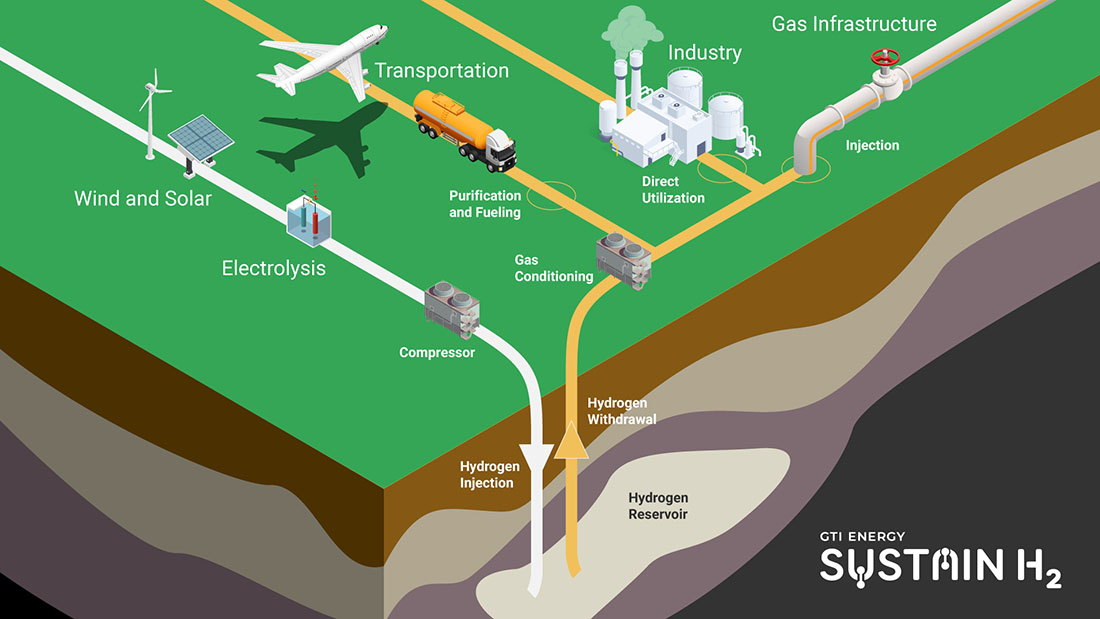Why SUSTAIN H2?
SUSTAIN H2 is designed to provide decision-makers with insights on proven technologies to address UHS challenges effectively. The initiative aims to deliver a comprehensive assessment of large-scale UHS development across all U.S. regions that evaluates:
Capacity
Efficiency
Safety
Potential for
Infrastructure
Reutilization
Economic
Feasibility
Capacity
Efficiency
Safety
Potential for Infrastructure Reutilization
Economic Feasibility
SUSTAIN H2 will unite researchers, regulators, and industry leaders to bridge the gap between underground hydrogen storage research and deployment. The collaboration will provide well-tested, safe technologies that align developments with market demands and expedite UHS infrastructure deployment.
Goals
Engage diverse stakeholders to coordinate cross-collaborative R&D
Address key technical challenges to resolve critical uncertainties
Facilitate data collection, sharing, and analysis to guide site selection
Complete national and regional assessments of UHS development
Accelerate field deployment by engaging stakeholders, building public acceptance, and reducing remaining uncertainties
The Hydrogen Value Chain
While renewable energy sources like wind and solar power play a large role in meeting growing energy demand, their output is intermittent and challenging to store at scale. Hydrogen helps to address this challenge by converting excess renewable energy into a storable fuel that can be used across sectors like transportation and industry.

UHS acts as a bridge between hydrogen production and end use. By storing hydrogen in geological formations like salt caverns, excess renewable energy can be captured and held until it’s needed. This enables large-scale, long-duration storage that stabilizes the supply of hydrogen for downstream applications. UHS strengthens the hydrogen value chain by making it more flexible, reliable, and responsive to both energy production patterns and market demands.
Learn More
Contact the energy experts today

